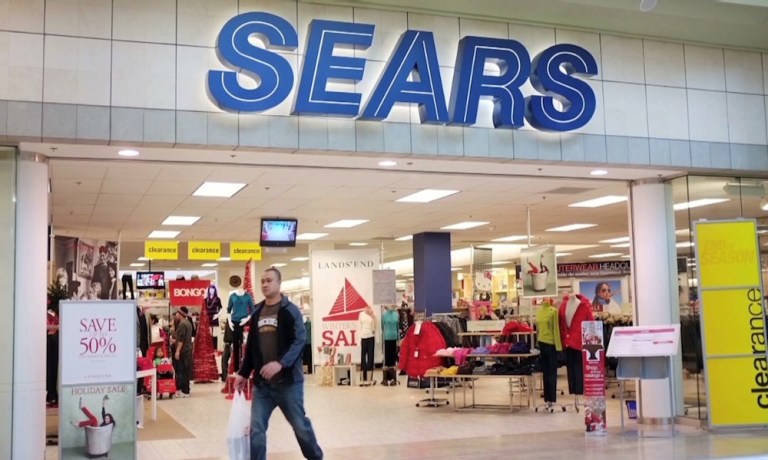
The problems bedeviling Sears are well-known. Retail is rendered, more and more, through digital means. Sales have been sliding. The company has been shuttering stores.
Sears has also been limping through the last several months on agreements that have seen the firm sell off some iconic brands such as Craftsman. It’s enough to think that the iconic Sears catalogue (which disappeared in 2011 due to an online sales shift and then reappeared last year amid nostalgia) is really, now, just a catalogue of top- and bottom-line maladies.
Against this backdrop, Sears shares have slipped 68 percent — almost the direct inverse of Amazon’s roughly 65 percent rise.
And amid the embers that seem to be slowing fading, a spark — due to Amazon no less — so we’ll call it an “Amazon Effect.”
Tuesday morning (August 28), Sears’ shares got a bounce: up 10 percent in intraday trading. True, that’s off a relatively small base, up about a dime, to $1.20. The jump came in the wake of news, as Bloomberg and other financial outlets reported, that the company has expanded its program where it installs and balances tires for customers who, in turn, buy those tires off Amazon.
The program is about three months old and covers 47 Sears stores across eight metropolitan areas in the United States. Now the program is going nationwide and touches Hawaii and Alaska too.
“The response from Amazon customers around this program has been extremely positive,” a statement from Mike McCarthy, vice president and general manager of Sears Automotive, read on Tuesday.
Replacement tires are no replacement for a struggling business model, and perhaps that is why the stock has given back a chunk of gains seen at this writing — the stock had, in fact, surged 34 percent earlier in the day.
The fact remains that the Sears linkup with Amazon is a nod to the tough road faced by some subsets within retail. The mindset of cross-pollination is one that speaks to a mindset of “if you cannot beat em, join em.” And Sears’ sanguine news follows agreements which Kohl’s has in place, where Amazon shoppers can return merchandise bought through the eCommerce juggernaut at Kohl’s brick-and-mortar locations. Party City said earlier this month that it will sell Halloween costumes on Amazon, and, if that proves successful, the limited tie-in may extend to, say, Christmas and New Year’s items.
Despite the bid to bring feet tramping into aisles, as seen in these partnerships (and no doubt others will come to bear in the coming months), the fact remains that Amazon and eTail remain the go-to staples for sticky, repeat buying. That’s a sentiment that comes from a survey of 6,000 consumers from Salesforce and Publicis.Sapient detailed this month that found that people make first-time buys from retailers (at 50 percent) and then marketplaces (31 percent). Yet when it comes to buying again — i.e. through repeat purchases — marketplaces hold sway, at 47 percent of repeat purchases, followed by retailers at 34 percent.
Maybe it’s best not to bet on new tires (or tire sales) saving Sears anytime soon?